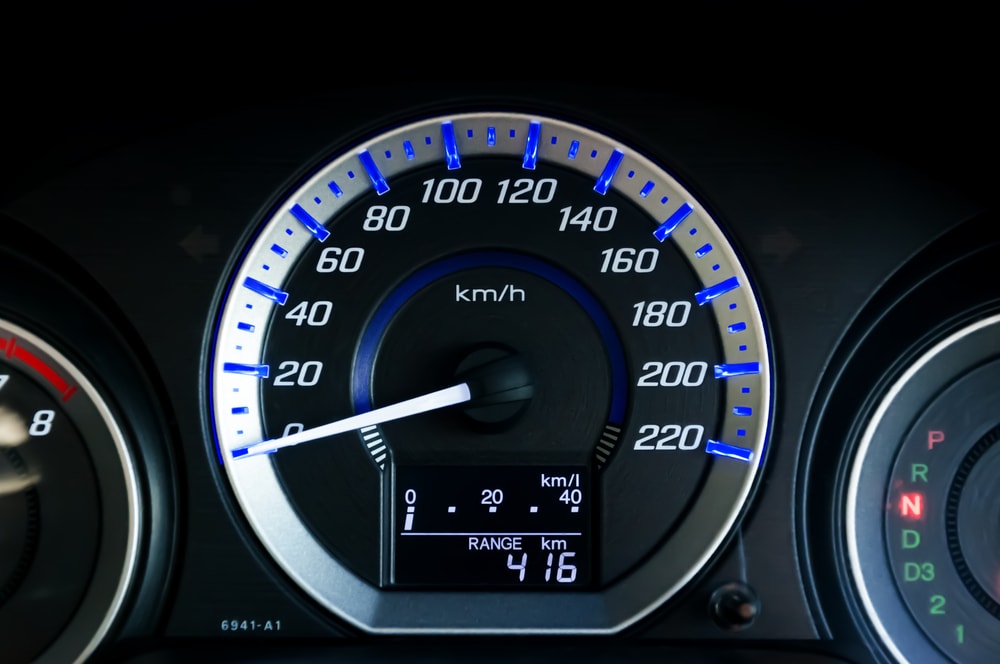

According to the US Department of Transportation, there were 42 million speeding tickets issued to United States licensed drivers in 2014. Although many of these drivers might claim their speedometer was broken when fighting the ticket, they'd be surprised to learn that this defense would result in another citation for a broken speedometer. A speedometer on any vehicle is an important safety device that is susceptible to breaking or falling out of calibration. The culprit of most speedometer issues is the speedometer cable or housing.
How a speedometer works
Prior to the early 1980's, the speedometers used in vehicles were mechanical in nature. The patent of the Otto Schulze-designed speedometer dates back to 1902, and was the primary speedometer used in vehicles across the globe for more than 80 years. Although they were very precise mechanical devices, they were very susceptible to falling out of calibration, or breaking entirely. This gave way to the electronic speedometer used in our cars today.
With an electric speedometer, the speedometer cable is attached to a drive gear inside the transmission or driveshaft and measures rotation through electrical pulses, then translates the duration of the electrical signal into the speed as you are driving. A secondary speedometer cable is attached to a wheel sensor and measures distance; which powers the odometer. The speedometer cable sends all of this information to the instrument panel where it is relayed to the speedometer.
The cable housing is a protective sheath that surrounds the cable to prevent it from being damaged. These two components work in conjunction to power the speedometer and deliver an accurate reading. Over time, they can fail due to damage, or wear and tear. Here are a few of the warning signs to consider that may be a strong indicator of speedometer cable or housing that may be failing:
Speedometer speed fluctuates erratically
Regardless of whether you have a manual gauge or an LED powered digital speedometer, they both share one similarity – smooth transition. When you accelerate or decelerate, your speedometer displays the speed progressively, meaning that it doesn't just jump from 45 to 55 mph instantly; it's a progressive climb from 45, 46, and 47 and so on. While you are driving, if you notice the needle on the speedometer jumps erratically from one number to another, the speedometer cable is most likely damaged or the sensors on the driveshaft are not accurately sending the signal through the cable.
Sometimes this problem can be solved by having a mechanic lubricate the cable housing or clean the sensors, as long as there is no damage to the sensors or cable. In some cases, the housing or cable is cut or has frays that are causing the erratic behavior of the speedometer. If this occurs, the entire cable and housing needs to be replaced.
Speedometer does not register
Another warning sign of a problem with the speedometer cable or housing is when the speedometer doesn't register any speed at all. If the needle on your speedometer does not move or the LED lights do not register a speed on the dash, it's likely that the speedometer cable and housing have already failed. However, this problem might also be caused by a faulty fuse or electrical connection to the dashboard. In either case, a certified mechanic should be contacted immediately to inspect, diagnose and repair the problem.
Squealing noises coming from the dashboard or below the car
When a speedometer cable and housing are failing, they may make squealing noises. The noise is also associated with the speedometer needle jumping around erratically as we explained above. The noises typically come from the dashboard of your vehicle, specifically where the speedometer is located. However, they might also come from the other source of attachment, the transmission under your car. As soon as you notice these noises, contact YourMechanic to have the speedometer cable and housing looked at immediately. If caught early it is possible for the mechanic to clean or repair the issue before it fails.
The speedometer itself does not typically break as it's designed to simply display information that it is sent through the cable. Both the cable and housing are exposed underneath your car, to different road conditions, weather, debris and other items that cause the speedometer cable and housing to fail. If you notice any of the warning signs noted above, don't delay. Contact YourMechanic today to schedule an appointment to stay safe and reduce the potential of getting a speeding ticket.



